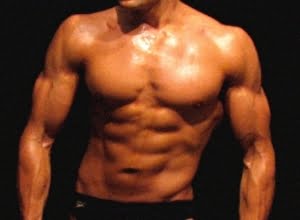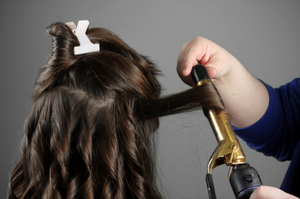There are a few reasons why you shouldn’t use the squat rack for barbell curls. The blunt truth is, this is very inconsiderate to those who need this apparatus for rack pulls and squats.
Many gyms have pre-weighted barbells; just pluck one off the stand and start curling. Why, then, would a person think nothing of tying up the squat rack with biceps curls? A person who wants to curl a barbell can do this exercise anywhere in the gym.
They can do it using the pre-weighted barbells. If they’re convinced that using the Olympic bar, with its extra length, builds the biceps better than a shorter barbell, they can use the Olympic bar – but they do not need to hog the squat rack to do this.
They can just grab an Olympic bar off a benching station and use that, since most gyms have several benching stations.
To use the Olympic bar that’s in the squat rack and then tie up the squat rack for arm curls is not cool. Another reason why you should not use the squat rack for barbell curls is that a trainee who wants to do barbell squats really needs the squat rack equipment for safety reasons.
That’s why it’s called a squat rack.
The structure of it allows a person to perform free-barbell squats with some protection. Therefore, to expect a person to do their free squats elsewhere, while you hog the equipment for arm curls, is not gym etiquette.
Another use for the squat rack is for deadlifts, because the rack is typically situated in a location that gives a person plenty of room to perform deadlifts. Plus, many people follow deadlifts up with free squats.
The squat rack comes in more than one kind of style. The first style has no adjustable resting supports on either side of the trainee for the barbell. The support is fixed, and it’s not low enough to perform rack pulls (also known as top deadlifts).
However, the other common style of this equipment indeed has an adjustable feature on either side of where the trainee stands.
This feature consists of bars that can be inserted at varying heights between the rack’s posts. This makes it very inviting for people to do rack pulls.
A rack pull, or top deadlift, is a deadlift in which the stopping point for the bottom part of the movement is above the floor, anywhere between the trainee’s mid-shins to mid-thighs.
It’s not possible to do rack pulls anywhere else but this kind of squat rack, because the trainee needs the stopper bars at the bottom of the movement.
It can’t be said enough that biceps curls with any barbell can be done anywhere in the gym. What purpose does it serve to perform these at the squat rack? None.
No Advantage
From a training standpoint, there is no advantage to using an Olympic bar for biceps curls versus a shorter bar. There is also no training advantage to setting the bar on the rack’s pegs in between sets.
It would seem that the trainee simply does not want to transport the Olympic bar to elsewhere in the gym, nor does he wish to make several loading changes while the bar is on the floor-the squat rack eliminates this hassle.
The squat rack also minimizes exertion in that the trainee does not have to lower to the floor to pick up the barbell at the beginning of every set, and then place it on the floor.
These reasons, though, do not justify tying up this equipment for curls. Few gyms have more than one squat rack, but most gyms have several benching stations.
A trainee can use a benching station to eliminate loading the barbell on the floor, by either placing the barbell in the benching station’s bar support, or, by placing it on the bench between sets.
The squat rack (depending on style) is also commonly used for standing overhead presses. The exhausted trainee can conveniently set the bar down on the pegs after every set. Where else in the gym can one do this?
Though it can be argued that standing presses can be done anywhere (and often, people are seen doing these elsewhere), the pegs are important because they eliminate having to set the bar down to the floor between sets.
However, if a person is curling, the arm and hand position are already in a predisposed position for lowering the bar to the floor. To place the bar onto the floor, from a shoulder press position, requires a controlled negative of the reverse curl.
This is extra exertion that a person may not want as part of their shoulder workout. Whereas placing a bar to the floor after a set of curls is actually an extension of the curling motion.
Another point to consider with overhead presses is that, what if the trainee is using really heavy weight? Just because a person can press very heavy weight overhead, does not mean they can then negative-reverse curl it to the floor without a struggle. The shoulders are much stronger than the forearms and wrists.
There just is no good argument in favor of performing arm curls at the squat rack. If a trainee wants to view himself, he can do the curls at other locations where there are mirrors. There is every good reason why you shouldn’t use the squat rack for barbell curls.



